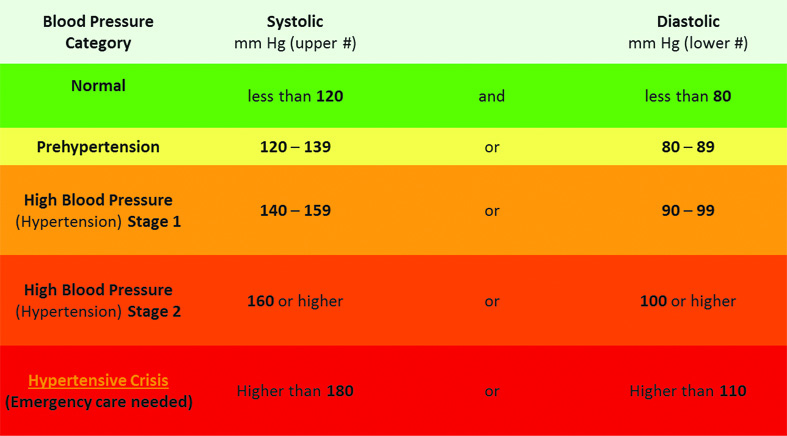[tweet][digg][stumble][Google][pinterest][follow id=”DER29709692″ size=”large” count=”true” ]
The Managing Director, New Heights Pharma, Lagos, Mr. Ogheneochuko Omaruaye has urged Nigerians to always go for blood pressure monitoring, saying it would help them reduce the risk of hypertension.
Delivering a lecture at a seminar to mark the World Hypertension Day in Lagos recently, Mr. Omaruaye said his organisation decided to add its voice to the movement for proper monitoring of blood pressure because trends of prevalence suggest that hypertension has increased in developing countries in recent years while it remains stable or decrease in developed countries. “The purpose of the World Hypertension Day is to promote public awareness on hypertension and encourage citizens of all countries to prevent and control this silent killer, the modern epidemic. The World Health Organisation reports that one in three adults has high blood pressure,” he said
For some experts, you don’t always have to go to clinic to have your blood pressure checked; you can monitor your own blood pressure at home. This is especially important if your doctor recommends that you monitor your blood pressure on a regular basis.
Tips for checking blood pressure
Certain factors can cause blood pressure to temporarily rise. For example, blood pressure normally rises due to: stress, smoking, cold temperatures, exercise, caffeine, and certain medicines.
Try to avoid as many of these factors as you can when taking your blood pressure. Also, try to measure your blood pressure at about the same time each day. Your doctor may want you to check your blood pressure several times during the day to see if it fluctuates.
Before checking your blood pressure
Find a quiet place to check your blood pressure. You will need to listen to your heartbeat.
Make sure that you are comfortable and relaxed with a recently emptied bladder (a full bladder may affect your reading).
Roll up the sleeve or remove any tight-sleeved clothing. Rest in a chair next to a table for 5 to 10 minutes. Your arm should rest comfortably at heart level. Sit up straight with your back against the chair, legs uncrossed. Rest your forearm on the table with the palm of your hand facing up.
Step-by-step blood pressure check
If you buy a manual or digital blood pressure monitor (sphygmomanometer), follow the instruction booklet carefully.
The following steps provide an overview of how to take your left arm blood pressure on either a manual or digital blood pressure monitor. Simply reverse the sides to take a blood pressure in your right arm.
1. Locate your pulse
Locate your pulse by lightly pressing your index and middle fingers slightly to the inside centre of the bend of your elbow (where the brachial artery is). If you cannot locate your pulse, place the head of the stethoscope (on a manual monitor) or the arm cuff (on a digital monitor) in the same general area.
2. Secure the cuff
Thread the cuff end through the metal loop and slide the cuff onto your arm, making sure that the stethoscope head is over the artery (when using a manual monitor.) The cuff may be marked with an arrow to show the location of the stethoscope head. The lower edge of the cuff should be about 1 inch above the bend of your elbow. Use the fabric fastener to make the cuff snug, but not too tight. Place the stethoscope in your ears. Tilt the ear pieces slightly forward to get the best sound.
3. Inflate and deflate the cuff
If you are using a manual monitor: Hold the pressure gauge in your left hand and the bulb in your right. Close the airflow valve on the bulb by turning the screw clockwise. Inflate the cuff by squeezing the bulb with your right hand. You may hear your pulse in the stethoscope.
Watch the gauge. Keep inflating the cuff until the gauge reads about 30 points (mm Hg) above your expected systolic pressure. At this point, you should not hear your pulse in the stethoscope.
Keeping your eyes on the gauge, slowly release the pressure in the cuff by opening the airflow valve counter clockwise. The gauge should fall only 2 to 3 points with each heartbeat. (You may need to practice turning the valve slowly).
Listen carefully for the first pulse beat. As soon as you hear it, note the reading on the gauge. This reading is your systolic pressure (the force of the blood against the artery walls as your heart beats). Continue to slowly deflate the cuff.
Listen carefully until the sound disappears. As soon as you can no longer hear your pulse, note the reading on the gauge. This reading is your diastolic pressure (the blood pressure between heartbeats). Allow the cuff to completely deflate.
Understanding the readings
Optimal blood pressure is less than 120/80 mm Hg (systolic pressure is 120 and diastolic pressure is less than 80). Consult your doctor if you get several high readings.
A single high reading of blood pressure is not an immediate cause for alarm. However, if you get a high reading, take your blood pressure several more times and consult your doctor to make sure you (or your monitor) don’t have a problem. When blood pressure reaches a systolic (top number) of 180 or higher or diastolic (bottom number) of 110 or higher, emergency medical treatment is required for hypertensive crisis.
[divider]



